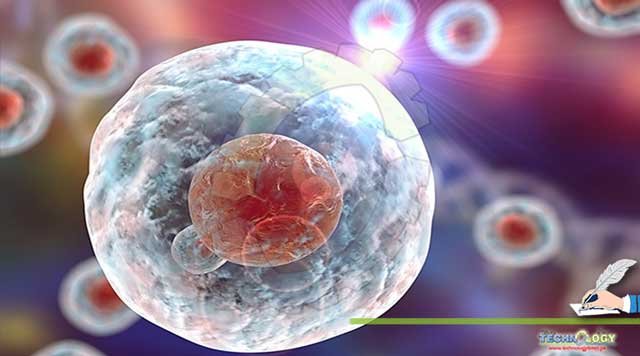Cancer is the abnormal cell growth with the potential to invade or spread to other parts of the body. It is a leading cause of death in developed and developing countries.

Cancer:
Cancer is the abnormal cell growth with the potential to invade or spread to other parts of the body. It is a leading cause of death in developed and developing countries. It is increasing medical burden worldwide, due to population growth and aging. Surgical resection, radiotherapy and chemotherapy are it’s treatments.
What Is The problem?
All of these treatment approaches has different side effects including recurrence of cancer and then there are those cancer that spread in the whole body. As a result of which, the traditional therapies fail in case of metastatic cancer. Therefore, researchers are working to develop a new, effective therapy with low or no toxicity in normal cells.
What Can Be The solution?
The solution to this problem are the stem cells which has provided a hopeful option in the fight against cancer.
So what are stem cells?
- Stem cells are special human cells that are able to develop into many different cell types.
- Stem cells can be embryonic or somatic stem cells.
- These somatic stem cells can be hematopoietic stem cells (blood stem cells), mesenchymal stem cells, neural stem cells, epithelial stem cells.
- All of them has their own specific function.
Why stem cells? _ Potential therapeutic carriers
Stem cells have unique properties, such as their ability to self-renew indefinitely. Also can form single cell derived clonal cell populations and can differentiate into various cell types. Stem cells migrate towards cancer cells that can be useful in cancer treatment. Similarly they can secrete bioactive factors and can cause immunosuppression which can promote tumor targeting. Preclinical stem cell based strategies show great promise for use in targeted anti-cancer therapy applications.
What Are The Stem cell modifications for cancer therapy?
There are multiple mechanisms for the modification of stem cells, useful in cancer treatment. The common modifications include:
Enzyme/prodrug therapy: Also called as suicide gene therapy. It involves alteration of stem cells to release enzymes that convert pro-drugs into cytotoxic products. The stem cells are inserted into tumor bearing models which localize the tissues. Then exogenous enzyme like cytosine deaminase converts the pro-drug into a cytotoxic molecule, ultimately damaging the tumor cells. As a result, the amount, timing and location of drug release can be precisely controlled.
Viral therapy: Virus delivery by mesenchymal stem cells is a promising approach for targeted cancer therapy. Oncolytic viruses, unlike traditional attenuated viruses, conditionally replicate in tumor cells. These viruses have increased spread in the body and hide from the immune system. Those oncolytic viruses’ transduced stem cells are still able to home to tumor cells and thus showed better anti-tumor effects than the viruses alone. Similarly, after radiotherapy, stem cells delivered oncolytic viruses increased survival rate in cancer like glioma.
Nanoparticle carriers: Delivery systems based on nanoparticles carriers often contain high concentration reagents which has different sort of negative effects. It involves failure to target micro metastatic lesions and insufficient dissemination in solid tumors. By using stem cells as nanoparticles delivery agents these limitations can overcome. Stem cells are also capable of reducing unrestricted uptake of nanoparticles by normal cells. It protects host therapeutic agents from host immuno survelliance. It showed very promising results in case of brain tumors. This approach increased intratumoral drug distribution and promoted tumor cell apoptosis more than other drug delivery systems.
Regenerative medicine: After chemotherapy, stem cells can be used to treat human tissues. because of their self-renew and differentiation capabilities. This treatment aims to reconstitute bone marrow under marrow failure conditions and also to treat blood cell genetic diseases. It works by supplying stem cells that differentiate into a desired type of blood cell.
Immunotherapy: For curing hematological malignancies, an immune mediated anti-tumor effect following allogeneic hematopoietic stem cells transplantation is sufficient. Introduction of genes encoding T cell receptors directed against tumor-associated antigens makes stem cells attractive for us in cancer immunotherapy.
WHAT ARE THE POTENTIAL APPLICATIONS OF STEM CELLS?
Various strategies have been developed for cancer treatment using stem cell therapy. Some of the potential applications of stem cell therapy in cancer are:
- Hematopoietic stem cells transplantation has been primarily used as a standard procedure for treatment of multiple myeloma, leukemia and lymphomas after rounds of high dose radiotherapy or chemotherapy.
- Mesenchymal stem cells transplantation after cancer treatment helps maintain the undifferentiated state of hematopoietic stem cells, also these cells have immunomodulatory effects that effectively reduces strong immune responses in patients.
- The rationales for using stem cells carriers in cancer treatment are to protect therapeutic agents for rapidly biological degradation and reduce systemic side effects.
- Stem cell based anti-cancer vaccines offer more applications to treat cancers.
What Challenges do stem cell therapy face?
- Tumors commonly relapse regardless of strong initial therapeutic effects. Stem cell therapy using a single agent generally cannot eliminate tumors. Therefore, an optimum drug combination should be rationally selected.
- Normal stem cells share some characteristics with cancer stem cells. Stem cell therapy may increase cancer risk. Thus prevention of tumor formation by transplanted stem cells required additional study and research.
Conclusion:
Stem cell therapeutics can be a potential treatment for cancer because of their unique characteristics.
References:
1. https://www.ncbi.nlm.nih.gov/pmc/articles/PMC7140431/
2. https://www.ncbi.nlm.nih.gov/pmc/articles/PMC5650462/
3. https://www.hindawi.com/journals/sci/2019/3507604/